Pear variety August dew
Avgustovskaya dew is a summer pear variety of the VNIIGiSPR (All-Russian Research Institute of Genetics and Breeding of Fruit Plants) named after V.I. I.V. Michurin. Bred through crossing the variety Tenderness (a donor of high winter hardiness and complex disease resistance) with the Australian variety Triumph Pakgama. Since 2002, the variety has been zoned in the Central Black Earth Region. Thanks to the set of valuable economic and biological characteristics, this pear continues to gain more and more widespread distribution.

Trees grow to small sizes (natural dwarfs up to 3 meters high) and are characterized by fast growth rates; the crown is medium thickened, slightly drooping in shape. Kidney awakening and the ability to form shoots are at a high level in this variety. When departing from the trunk, the branches form an almost right angle. The bark on the trunk and skeletal branches with a smooth surface, gray in color. Fruit formations are tied most often on simple and complex ringlets, spears.
Shoots are rather thick, curved, geniculate, light brown. Lentils are small in size, numerous. The kidneys are of medium size, bent, conical in shape. The leaves are medium in size, oblong-ovoid, serrated at the edges, short-pointed at the ends, colored dark green. The leaf blade with a glossy surface and a wedge-shaped base is directed upward. The petioles are of medium length and thickness. The internodes are medium. Stipules are small, saber-shaped.
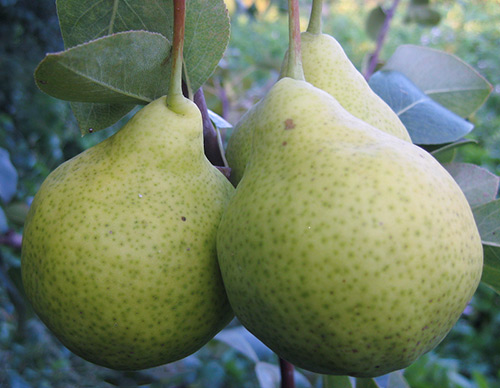
Flowers are small in size, saucer-shaped, white in color, petals with solid edges, unclosed, in inflorescences there are 7-10 flowers; sepals rather long, with a curvature towards the pedicel; pistils are long, located above the level of the anthers.
Pear fruits August dew are medium in size (average weight 120 - 150 g, but not less than 100 g), quite one-dimensional, aligned, short-pear-shaped, non-ribbed. During the period of removable maturity, the fruits are green and devoid of integumentary coloration. During the consumer period, the main color becomes greenish-yellow, the integumentary color appears - in the form of a very weak blush on an insignificant part of the fruit. The skin is smooth, dull, with numerous subcutaneous punctures. The peduncles are rather thick, long, curved in shape. Funnel of small size, blunt-conical shape, slight rustiness is present. The cup is small, closed. The saucer is small in size, rather wide, with slight ribbing. The heart is large, bulbous. Seed chambers of medium size, closed type. The sub-cup tube is short, wide, cupped.

The pulp is white, fine-grained structure, tender, melting, very juicy, harmonious sour-sweet taste (not fresh-sweet). On a 5-point tasting scale, the taste of the August Dew pear is estimated at 4.6 points. By chemical composition, the fruits contain: the sum of sugars (8.5%), titratable acids (0.59%), pectin substances (0.84%), P-active substances (40 mg / 100 g), ascorbic acid (13 , 2 mg / 100 g), arbutin (2.72%). Predominantly refers to varieties of table use.
The period of removable maturity occurs in mid-September. Ripe fruits are firmly held on the branches. In a cool place, the total shelf life does not exceed, as a rule, 2 weeks. In a refrigerator, pears can retain their taste and freshness for much longer - up to 3 months.Marketability is at a high level, not less than 90%, for the 1st grade - up to 70%.
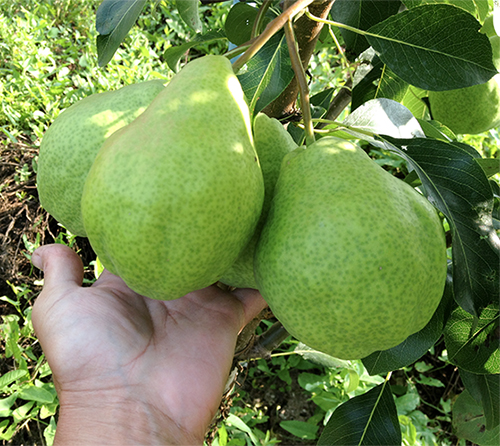
This pear has a low degree of self-fertility; the Pamyati Yakovlev variety is recognized as the best pollinator for it. The early maturity is high, the trees bear fruit regularly, starting from the 3rd - 4th year after planting in the garden. The variety is highly productive. Already in the 4th year after planting, up to 10 - 15 kg of fruits can be harvested from one tree. In the period of full fruiting, the yield reaches 200 c / ha. The level of winter hardiness and drought resistance is high. Trees are resistant to major diseases and pests (leaves and fruits are not affected by scab). The variety is unpretentious in care.
The obvious advantages of the August dew pear are: high winter hardiness and productivity, early maturity, high marketability of fruits, good resistance to a number of diseases and pests.
Speaking about the disadvantages: it is noted that in the years of bountiful harvests, the fruits become somewhat uneven.
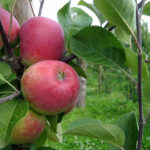

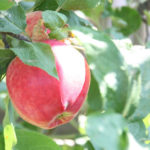
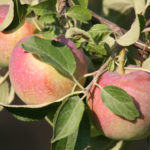
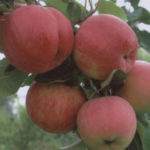
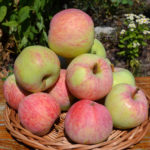



The variety is good, winter-hardy in the Middle lane, the fruits are tasty, ripen in the third decade of September.
Requires preliminary removal and ripening.
The period of harvest maturity is incorrectly indicated - not in mid-September, but in mid-August.